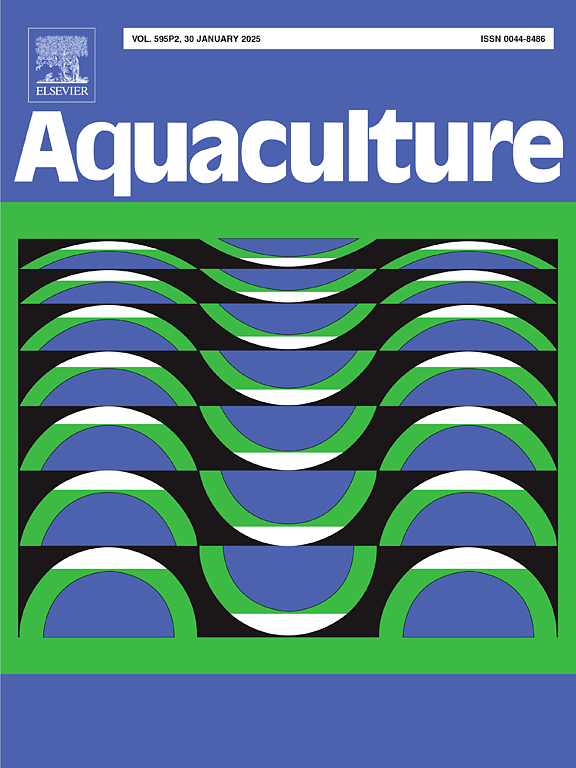The virulence role of the fliQ gene of Vibrio harveyi and its effect on the immune response of the large yellow croaker (Larimichthys crocea)
IF 3.9
1区 农林科学
Q1 FISHERIES
引用次数: 0
Abstract
In this study, we focused on Vibrio harveyi, a prevalent pathogen in aquaculture. Previous research has shown that its flagella and the flagellar synthesis protein FliQ play a vital role in adhesion, infection, and virulence. We constructed a fliQ gene deletion mutant strain (ΔfliQ) from the wild-type strain LcV6 (Wt-LcV6) to investigate the function of fliQ in V. harveyi and evaluated its biological characteristics. Through transcriptome analysis, we compared the gene expression levels between Wt-LcV6 and ΔfliQ. Also, we intraperitoneally injected ΔfliQ into large yellow croakers for immunization to assess its protective effect. The results indicated that the growth and biofilm synthesis abilities of ΔfliQ were similar to those of the wild type. However, the motility of ΔfliQ notably decreased. Transcriptome analysis demonstrated that the deletion of the fliQ gene caused a significant reduction in the mRNA levels of gltD, malE, malQ, lamB, and pulA, primarily affecting pathways related to sulfur metabolism, selenium metabolism, monoacyl lactam biosynthesis, and several amino acid and carbohydrate metabolisms. Moreover, after immunization with ΔfliQ, the large yellow croakers had a relative protection rate of 43.3 % against V. harveyi. ΔfliQ effectively induced an increase in the specific IgM antibody level, significantly enhanced the activities of CAT, AKP, and SOD, and promoted the expression of immune-related genes (IgM, IgD, TGF, IL-1, TNF, MHC II, CD4, and CD8) in the liver, spleen, and kidney of the fish. In conclusion, the fliQ gene is a crucial virulence factor of V. harveyi. The ΔfliQ can effectively boost the immunity of immunized fish, making it a promising candidate for a vaccine against V. harveyi. This research provides a new direction for developing attenuated vaccines against this pathogen, which has practical significance for aquaculture disease prevention and control.
求助全文
约1分钟内获得全文
求助全文
来源期刊

Aquaculture
农林科学-海洋与淡水生物学
CiteScore
8.60
自引率
17.80%
发文量
1246
审稿时长
56 days
期刊介绍:
Aquaculture is an international journal for the exploration, improvement and management of all freshwater and marine food resources. It publishes novel and innovative research of world-wide interest on farming of aquatic organisms, which includes finfish, mollusks, crustaceans and aquatic plants for human consumption. Research on ornamentals is not a focus of the Journal. Aquaculture only publishes papers with a clear relevance to improving aquaculture practices or a potential application.
 求助内容:
求助内容: 应助结果提醒方式:
应助结果提醒方式:


